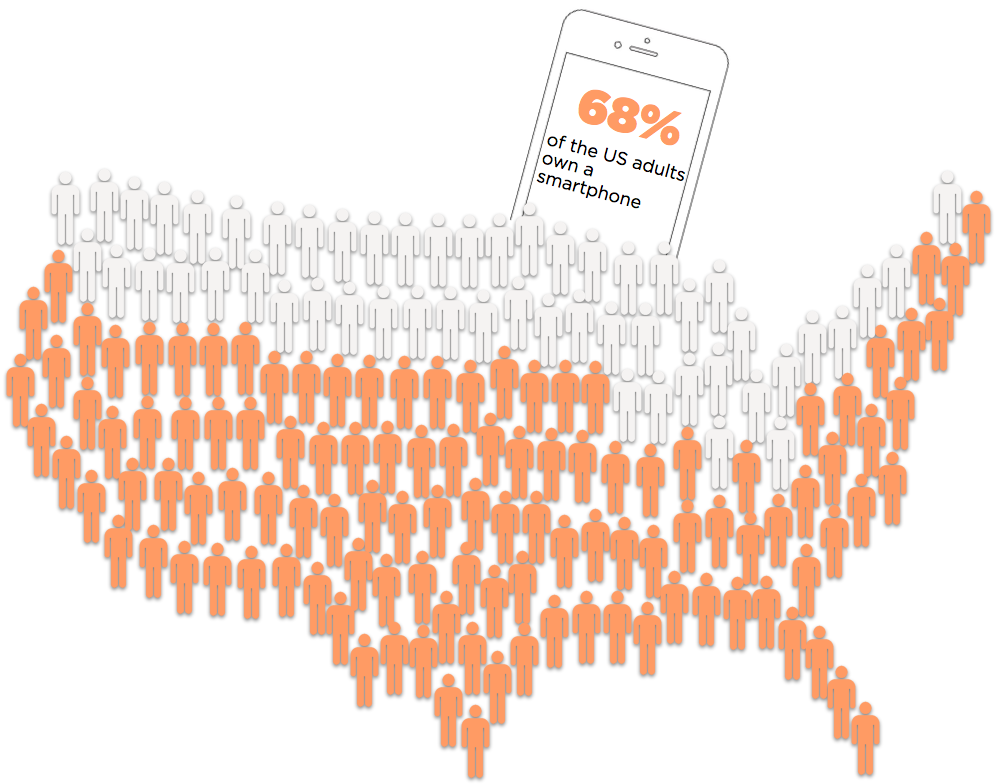Why can't I have a data-only plan for my smartphone?

Today 68% of American adults own a smartphone. That is approximately 216,852,000 of us. But have you really ever thought about how much time you spend using that device? According to recent studies, we spend anywhere from 3.3 hours (pdf) to 4.7 hours per day on our smartphones alone. And based on Ericsson’s 2015 Mobility Report (pdf), the increase in smartphone adoption unsurprisingly directly correlates with a dramatic rise in mobile data usage. According to the report, mobile data traffic around the world rose 55% from 2014 to 2015.

So what are we doing with all that mobile data?
Well we are increasingly streaming video and music, emailing, messaging, navigating and of course social media-ing. One thing we aren’t doing more of though is talking on the phone. Over the years, the number of minutes Americans spend talking on the phone has stayed pretty darn stagnant. Meaning, we aren’t really using our smartphones as “phones” all that often. Instead we are treating them like mini handheld computers that let us stay connected in a multitude of ways besides talking.
And now even the calls we do make are beginning to go over data. Most calls are routed through data in two different ways. First, for those of us who use VoIP (voice over IP) applications such as Skype, Google Voice and Facetime, calls use our mobile data connections, usually 3G or 4G LTE. This eats into our monthly data allotments. Second is the implementation of WiFi calling. Currently AT&T, T-Mobile and Sprint have WiFi calling features, while late-to-the-game Verizon is still waiting for FCC approval. Offloading calls to WiFi allows mobile carriers to free up their own spectrum and reduce congestion, which makes their networks faster. I have WiFi calling enabled on my phone. And since I spend the vast majority of my time at work or at my apartment (where I have a WiFi connection), the majority of my calls run over WiFi rather than cellular service fallbacks.

Texting (or SMS) can be routed through data as well. In fact, you are probably already using an app that does this, such as Charge Messenger, iMessage or Facebook Messenger. Personally, I haven’t sent or received a traditional SMS since October 13th. And that’s only because I have a friend who refuses to install any messaging apps. She is basically the only person I send a traditional SMS to anymore.
So if everything I do on my device can be routed through data in one way or another, shouldn’t mobile data-only plans for smartphones be an option? That would be nice, but for now mobile carriers still bundle all their services together.

How mobile carrier plans currently work
The modern mobile carrier plan usually highlights a particular data allotment (between 1 and 5 GBs per “line” is common), with unlimited voice minutes and texts bundled in. Carriers market unlimited talk and text as a “free” gift to consumers. In fact, bundling free voice and text is a lot like when carriers bundled device payments with service contracts. Device subsidies seemed like free money, but our service plan prices were higher to make up for it. And even if a customer didn’t want a subsidized device, the price of the service plan didn’t get cheaper. But the subsidy is free, remember!? 😡 Now, instead of “free” devices and upgrades we get “free” minutes and texts.
And just like with device subsidies, current mobile service plan prices are marked up to account for those who do in fact utilize unlimited minutes and texts. If a data-only plan for smartphones were a thing, it would be priced similarly to current tablet data plans that range from $10-$15 per GB. But my current 2GB smartphone plan costs $50. I typically use somewhere between 1 and 2 GB of data each month. So if a data-only plan were an option my mobile service bill would be somewhere in the range of $20-$30. Sounds great right?
Why a data-only plan can work
Tons of other industries are doing away with bundled pricing plans that force people to pay for things they don’t use. Take a look at Metromile, a pay by the mile car insurance company. They understand everyone drives different distances each month. Why should someone who only drives a couple times a month pay the same amount for car insurance as the guy that travels for work every day? It doesn’t make sense. TV streaming services like SlingTV or even iTunes and Amazon Instant Video take the same approach by unbundling channels and episodes from the traditional cable TV plan. These companies understand that people are forced to pay for things they don’t actually want or use, so they give customers new options.
It’s time that mobile carriers do the same. If carriers unbundled their services, I could be happy with a data-only plan while my mom who likes to chat and doesn’t use VoIP apps could choose a minute-heavy option to make all her phone calls. But in order for carriers to change their sneaky ways, we as consumers have to truly understand our usage. How much of traditional cellular service are you really using? Start to pay attention and you’ll probably be surprised. Maybe a data-only plan is already the right fit for you too.
